How inland surfing will change the face of the surf industry
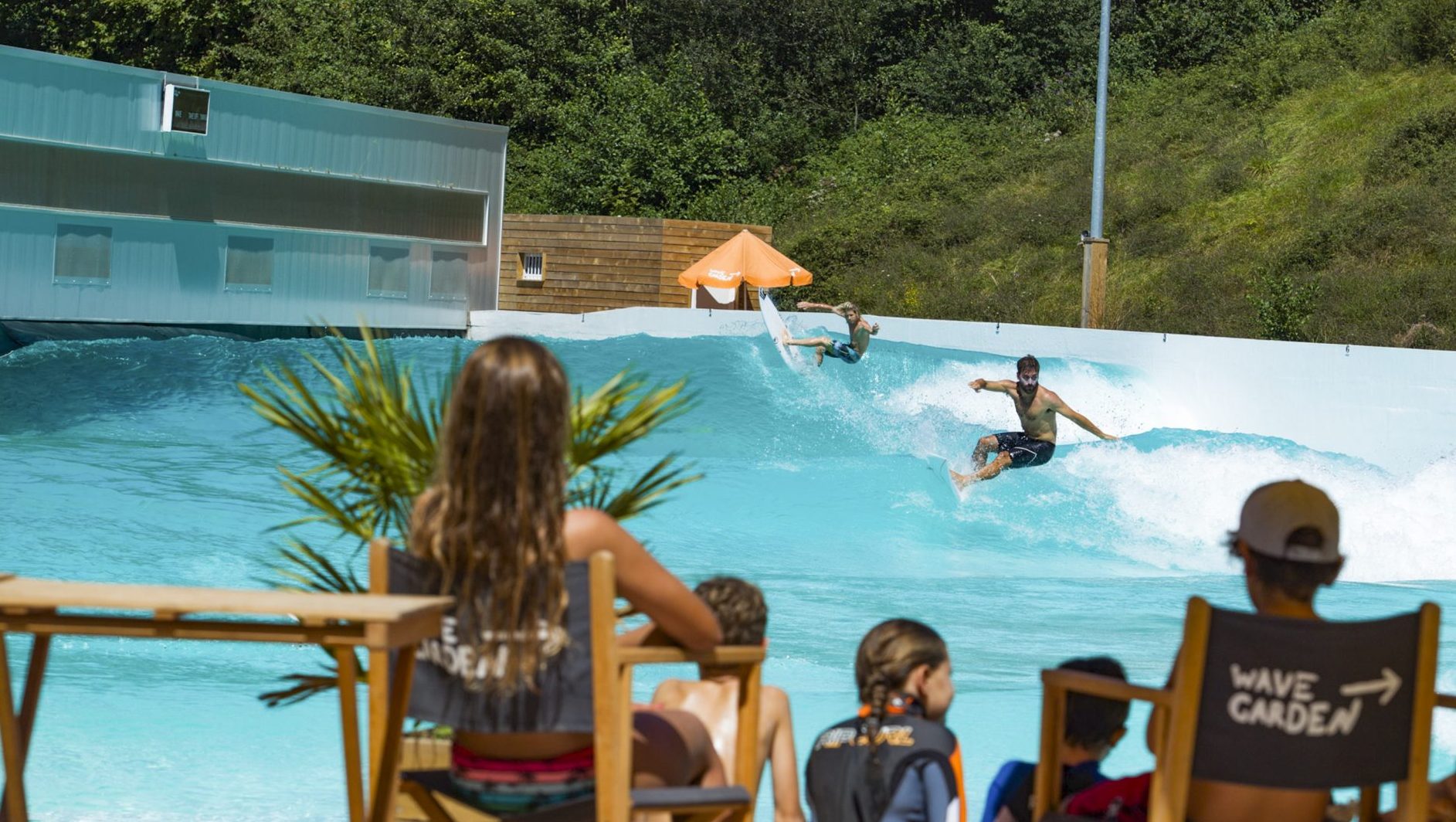
The surf industry is a strange beast. On one hand, it has to make tangible one of the most elusive and fleeting sensations in the world – that of sliding along a wave. On the other, nothing is easier than reiterating the sheer joy and stoke of surfing.
Companies go through elaborate marketing campaigns to align their brand with surfing. Some, like The Search, remind us of those magic, perfect days and of new waves to be discovered. Other campaigns merely amalgamate that season’s buzz phrasing in hopes of reaching the coveted 17-to-34-year-old demographic. And the marketplace is rife with ad tags like “The Best Boardshorts Ever.”
More than a decade ago Quiksilver’s Bob McKnight famously instructed the surf industry to “grow the pond” of surfers to increase brand presence among a new sector. Companies signed musical acts and fashion designers and suddenly surfing wasn’t solely about, well, surfing. Now with wave pools literally growing the pond, how will this same industry respond?
The Surf Industry Manufacturers Association Europe executive director Franck Laporte sees wave pools playing a core role in this new growth.
“The wave pool will democratize surfing and make it more accessible to a number of new consumers, so it’s a great leveler for the development of the surf industry because it will develop a whole new generation of surfers,” said Laporte. “These surfers will be more urban and won’t necessarily have the chance to live on the coast near natural waves.”
Laporte also pointed out the rare opportunity for manufacturers to bring product and lifestyle marketing physically on site of where the action is taking place. Something much easier to implement than putting a Boardriders shop at First Point Malibu.
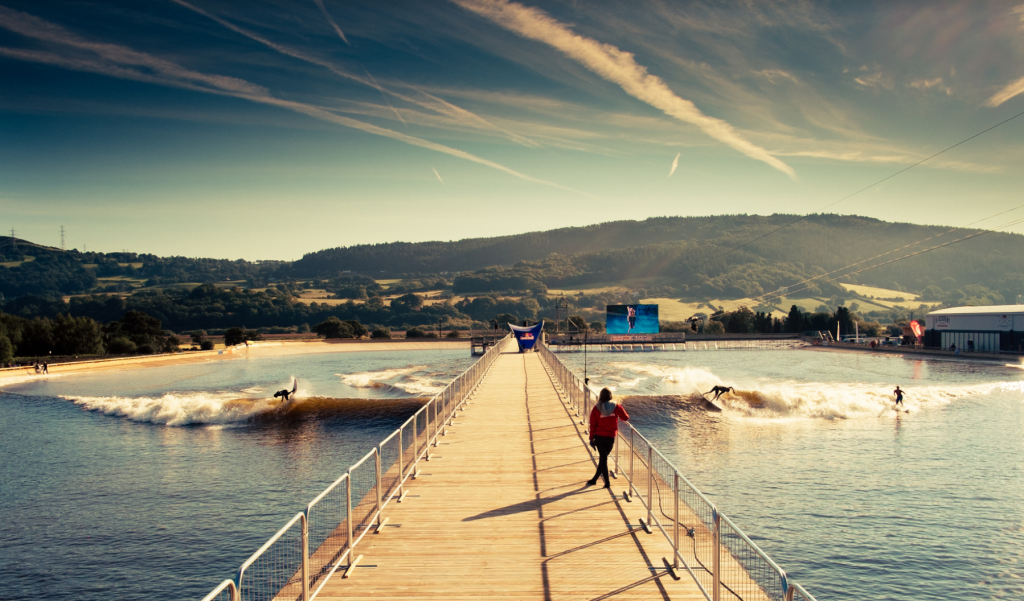
Wave pools will usher in more new surfers
The most immediate application of wave pools in the surf industry is equipment testing. Everyone needs hardgoods. One of the world’s largest surfboard brands, Firewire, recognizes this new potential. CEO Mark Price is ready to fully embrace the wave pool boom. In fact, they were one of the first to partner with Surf Snowdonia when it opened.
“Whether it be in areas that already have waves near the ocean or inland markets, wave pools will create more opportunities to surf and/or start surfing,” said Price. “Wave pools will certainly create demo opportunities whereby potential customers can test ride our boards, and in the inland markets, new communities of surfers will develop over time.”
Price predicts that the freshwater movement will address the needs of both newbies and old salts. More surfing equals more need for surfboards.
“So, wave pools will attract new participants to surfing, and in many cases allow existing surfers to surf more often,” added Price. “Both of which bode well for increased surfboard sales.”
Rip Curl Chief Brand and Marketing Officer Neil Ridgeway is more guarded. He speculates we won’t know for a few years how the surf biz will cater to both ocean and freshwater surfers.
“It is too early to tell as many pools are still working out the bugs and being used in a limited way,” said Ridgway. “But in a few years when they are up and running smoothly, there will definitely be a new core market alongside the current – not just the once-off and tourist.”
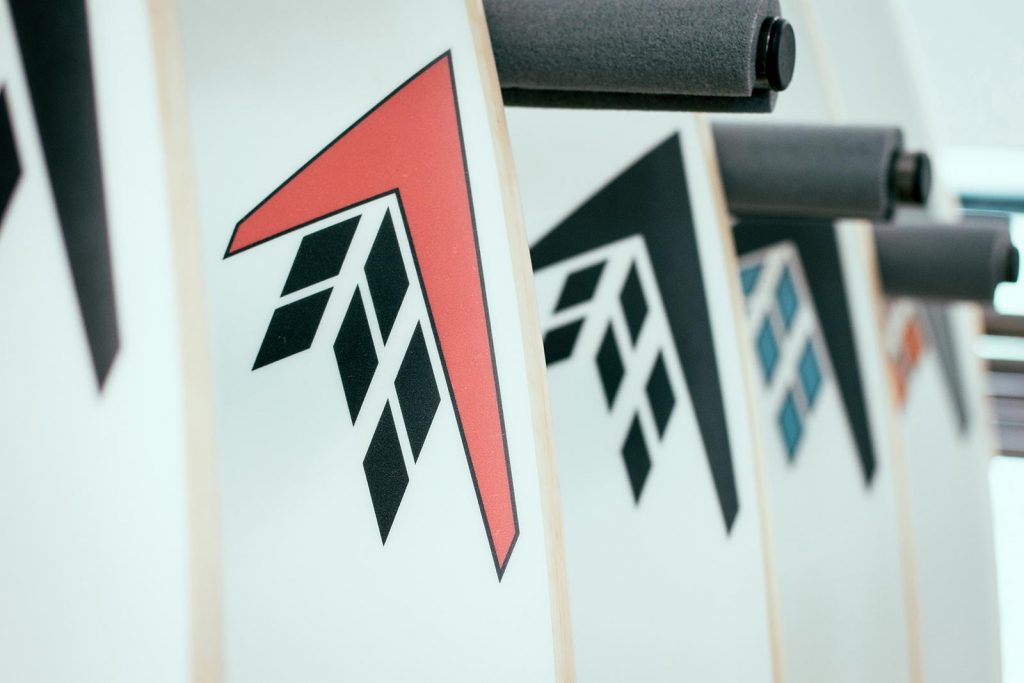
The future of wave pool surf retail is all about partnerships
Rip Curl also became a major retail partner with Snowdonia when they debuted in 2015. Ridgway sees these partnerships as key to both attracting new surfers to the brand and connecting with the established surf set.
“We have some solid partnerships with Urbnsurf developing here in Oz and UK and Europe and we are working those out as they go and as they make sense,” added Ridgway. “Our pro team like going and surfing them as an alternative and we will send Connor Coffin and a couple of others to Bristol on the way to the Euro leg of the World Tour. It’s another angle to play with distribution and we will go along for the ride and see how far it can go.”
Ridgway’s go-as-it-grows approach is shared by many, and it signals a new era of caution in a notoriously cavalier industry. In the mid-2000s surf companies went big. They went public, stocks got traded, fortunes were made. And logo tees could be found at your local Costco. Surfing became less unique. Many fear it will lose its buzz again with machine-made waves.
Several of today’s surf execs watched the “too big to fail” brands nearly get KO’d a few years back. Consequently, everyone’s cautious to maintain equilibrium. And authenticity.
“The concepts are new and captivating and where it fits with our brand we will be in,” added Ridgway. “But we won’t walk away from the core forms of Searching and surfing either, so it’s a matter of balance.”
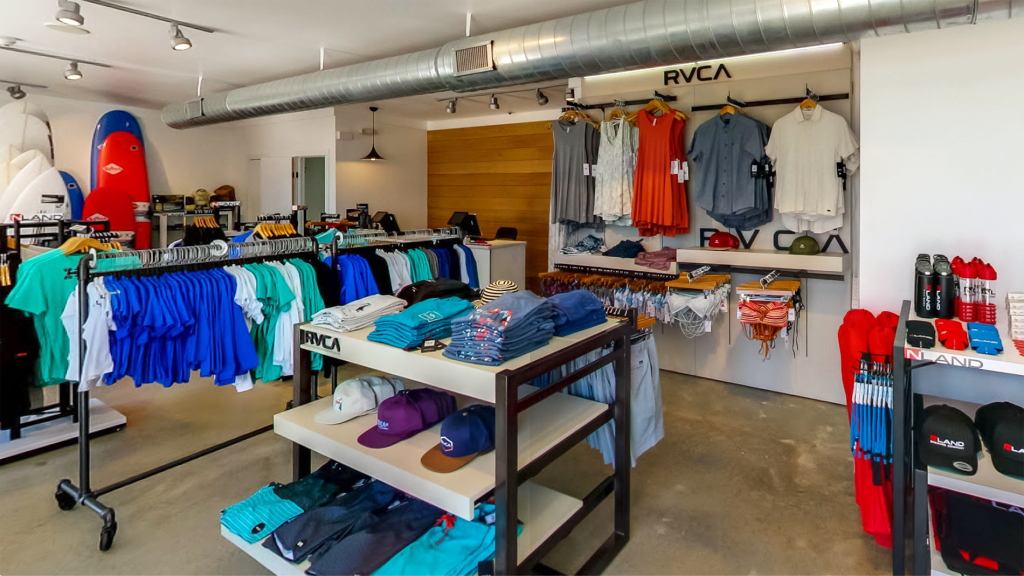
The future of wave pool surf retail is all about proximity
Phil Jarratt, author of “Salts and Suits” a book about the rise and stumble of the surf industry says staying core is key. And added that the way in which brands partner with wave pools will be as varied as the wave pools themselves.
.
“If a wave pool is part of a theme park, I suspect the core surf industry will keep it at arm’s length,” said Jarratt. “On the other hand, if the WSL manages to convince us that wave parks are legitimate world tour venues – and I think the jury is still out on that – then the industry is more likely to embrace commercial opportunity within them.”
Some suggest custom wave pools at flagship retail space will work, much in the way the Boardriders stores often have skate parks. Others see the exclusive shelf space of a wave pool’s surf shop as key to retail success.
“Given the state of the industry generally, I think it’s more likely that the bigger brands will accept the invitation to set up stores within existing parks,” added Jarratt. “If and when they can attract high user volume, the retail space rental might be high but it would be a lot less than building your own pool at a shopping complex.”
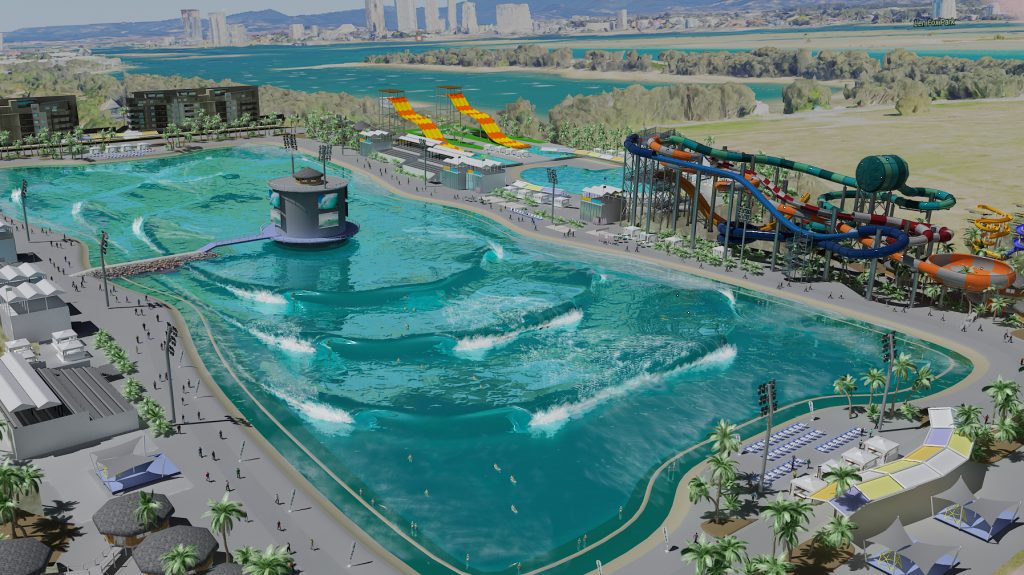
At which wave pool are you more likely to spot a pair of $200 boardshorts?
Surf marketing gets even more complicated when you compare new wave pool facilities.
From gated community resident-only pools to urban renewal projects with government subsidized housing, each wave pool will attract a different clientele simply due to accessibility.
A session at BSR Surf Resort runs $90 for roughly 10 waves during an hour session or $9 per wave. The vibe at the park is barbecue, beers and bros. Friendly and very much “Texas.” By contrast, peak season Kelly’s breaks down to roughly $450 per wave. Surfing a single wave that costs the same as a weekend in Baja is rather serious. And consequently, the wave is surfed with a certain seriousness, as noted by Jarrett on a recent foray to Kelly’s.
“From the little I’ve seen of the high-end pools, they seem to attract a lot of intensity of purpose in users. What would excite me is a park where sharing the stoke with friends is the main priority. I believe such a beast exists.”
Surfing is that beast. We share sessions with friends and there are few things in life that are finer. As long as wave pools stay hot spots of stoke, the beach vibe will carry over into freshwater. That part is easy for the surf industry to navigate. The hard part will be to navigate the micro divisions within this new core market.
Trackback from your site.
Related Coverage
